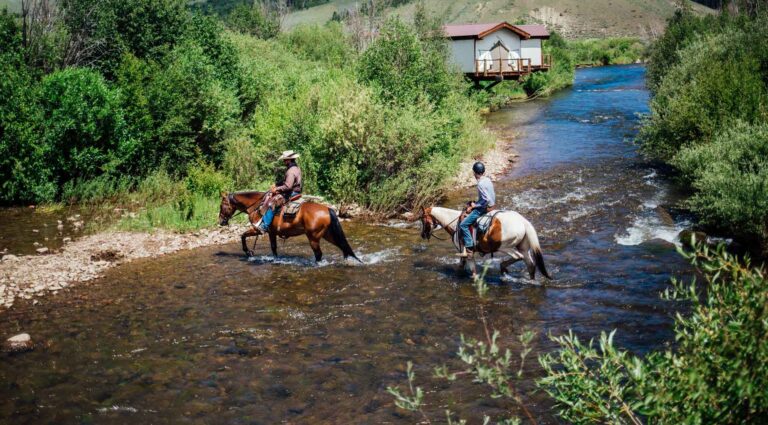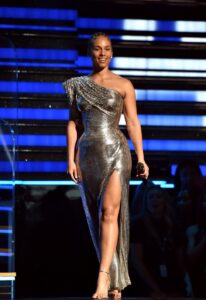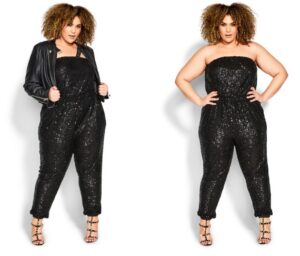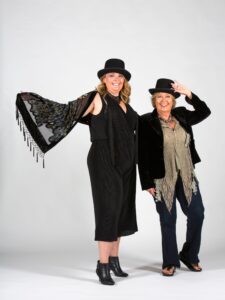Wear boots with a heel and comfortable pants when horseback riding. Horseback riding is a thrilling and immersive experience that allows you to explore the beauty of nature while connecting with these majestic animals.
Whether you are a beginner or a seasoned rider, it is essential to dress appropriately to ensure your safety and comfort. One of the most important considerations is footwear. Wearing boots with a heel is crucial, as they provide stability and prevent your foot from sliding through the stirrup.
Additionally, comfortable pants or jodhpurs are recommended to allow for easy movement and to prevent chafing. We will discuss in detail what to wear for horseback riding to ensure an enjoyable and safe experience for both you and the horse. So, let’s dive in and explore the essentials of equestrian attire.
Essential Horseback Riding Attire
- The Right Helmet: A properly fitted helmet is crucial for your safety while horseback riding. Look for helmets that meet safety standards and provide a secure fit.
- Comfortable Riding Boots: Invest in a pair of sturdy boots with a defined heel to ensure proper foot placement in the stirrups. Look for boots made specifically for riding.
- Fitted Breeches or Riding Pants: Opt for fitted pants or breeches to minimize chafing and friction against the saddle. Choose materials that provide stretch and flexibility for easy movement.
Horseback riding attire should prioritize safety and comfort. In addition to a properly fitted helmet, make sure to wear comfortable riding boots with a defined heel for stability. Fitted breeches or riding pants are ideal to minimize discomfort and maximize mobility while in the saddle. Investing in quality riding gear will enhance your overall riding experience and keep you safe during your equestrian adventures.
Choosing The Best Riding Shirt
Choosing the Best Riding Shirt
Horseback riding requires comfortable and protective attire, and the riding shirt is an important part of your outfit. When selecting a riding shirt, it’s crucial to prioritize breathable fabrics to ensure maximum comfort during your ride. Breathable fabrics, such as lightweight cotton or moisture-wicking materials, allow air circulation and help keep you cool even on hot days.
Another consideration when choosing a riding shirt is long sleeves. Long sleeves provide protection against the sun, bugs, branches, and potential scrapes or scratches while riding. Look for shirts with UPF sun protection for added safety.
Weather can be unpredictable, so layering is another option to consider. Riding shirts that are versatile and can be worn both alone and as a base layer underneath a jacket or vest are ideal for varying weather conditions. Layering allows you to easily adapt to changing temperatures and ensures you stay comfortable throughout your ride.
Optimal Accessories For Horseback Riding
htmlOptimal Accessories for Horseback Riding
When it comes to horseback riding, having the right accessories is essential for a comfortable and safe experience. Riding gloves provide a better grip on the reins, preventing them from slipping out of your hands. They also protect your hands from blisters and ensure a comfortable hold throughout your ride.
For additional safety, it is recommended to wear a protective vest. This will offer extra padding and protect your torso in case of a fall or accident. It is crucial to prioritize your safety when participating in horseback riding activities.
Furthermore, outdoor rides can expose you to harmful UV rays. To shield yourself from the sun, it is advisable to wear sun-protective clothing. Look for lightweight, breathable fabrics that provide UV protection such as UPF-rated shirts, long pants, and wide-brimmed hats. These items will not only protect your skin but also keep you cool during your ride.
Proper Undergarments For Riding
When horseback riding, it is important to wear the right undergarments to ensure a comfortable and supported ride. For women, a supportive sports bra is essential. Look for one that offers good coverage and has wide straps for added support. Additionally, seamless underwear can help prevent any discomfort or chafing while riding. Opt for underwear made from moisture-wicking fabric to keep you dry and comfortable throughout your ride. Lastly, don’t forget about your feet. Invest in socks specifically designed for riding to prevent chafing and blisters. Look for socks that have extra padding in high-pressure areas such as the heels and toes. By wearing the proper undergarments, you can focus on enjoying your ride without any discomfort or distractions.
Understanding Riding Helmet Safety
Wearing a helmet is crucial for ensuring safety while horseback riding. A well-fitted helmet can greatly reduce the risk of head injuries and even save lives. When choosing a riding helmet, make sure it meets the necessary certification standards, such as ASTM or SEI. These standards ensure that the helmet has undergone rigorous testing and meets the required safety criteria.
Proper care and regular replacement of helmets are also important to maintain their effectiveness. Inspect your helmet regularly for any signs of damage, such as cracks or loose straps, and replace it if necessary. It’s recommended to replace your helmet every five years, even if it hasn’t been involved in any accidents.
Remember, your safety should always be a top priority when horseback riding. Investing in a well-fitted and certified riding helmet, and taking proper care of it, is essential to protect yourself from potential head injuries.
Selecting The Ideal Riding Boots
htmlChoosing The Right Boot Material
When it comes to selecting the ideal riding boots, it is important to consider the boot material. Different materials offer different benefits and considerations for horseback riding.
For proper fit and comfort, leather boots are the most popular choice. They provide durability, good grip, and flexibility. Synthetic boots, on the other hand, are often more affordable and require less maintenance.
There are different types of riding boots available, each designed for specific disciplines or riding purposes. Dress boots are typically used for formal events or dressage, while field boots are more versatile and suitable for various disciplines. Paddock boots, also known as jodhpur boots, are commonly used for everyday riding and barn work.
Ultimately, when selecting riding boots, it is crucial to prioritize proper fit, comfort, and functionality. Choosing the right boot material and understanding the different types of boots can help in finding the ideal pair for your horseback riding needs.
Considerations For Riding Pants Or Breeches
Considerations for Riding Pants or Breeches
Importance of Full Range of Motion
When horseback riding, it is important to wear pants or breeches that allow for a full range of motion. This is because riding requires movements such as stretching, bending, and lifting, and restrictive clothing can hinder these actions. It is recommended to choose pants or breeches made from flexible and stretchy materials that allow for ease of movement. Additionally, breathable fabrics are ideal to ensure comfort during long rides, as they help to wick moisture away from the skin.
Finding the right size and fit is also essential for a comfortable riding experience. Pants that are too tight can restrict movement and cause discomfort, while pants that are too loose may create friction and chafing. It is important to try on different sizes and styles to find the perfect fit. Some pants or breeches also come with adjustable features, such as waistbands or leg cuffs, which can help customize the fit.
Ultimately, choosing riding pants or breeches that prioritize range of motion, material breathability, and the right size and fit will ensure a comfortable and enjoyable riding experience.
Benefits Of Breathable Riding Shirts
Riding shirts made from breathable and moisture-wicking fabrics offer numerous advantages for horseback riders. These specialized materials are designed to keep riders cool and comfortable, allowing them to focus on their riding experience without distractions. Breathable riding shirts effectively wick away moisture, ensuring that sweat is quickly evaporated, keeping the rider dry and preventing discomfort caused by a clammy feeling. These shirts also provide UV protection against harmful sun rays, reducing the risk of sunburn during long rides. Additionally, they come in a variety of styles and designs, allowing riders to choose shirts that suit their personal preferences and the occasion. Whether it’s a casual trail ride or a competitive event, there is a right style of breathable riding shirt available to cater to every rider’s needs and tastes.
Maximizing Comfort With Layering
Layering is essential for maximizing comfort while horseback riding. By wearing multiple layers, you can easily adjust your clothing to minimize discomfort and adapt to varying weather conditions.
When it comes to types of riding outerwear, there are several options to choose from. Consider a lightweight base layer made of moisture-wicking material to keep you dry and comfortable. A mid-layer, such as a fleece or softshell jacket, provides insulation and warmth. Finally, a waterproof and windproof outer layer, like a riding coat or jacket, is crucial for protecting yourself from the elements.
One of the key benefits of layering is the ability to adjust your clothing based on the weather conditions. In cooler temperatures, you can add or remove layers accordingly. When it’s cold, consider wearing thermal or woolen layers to trap body heat. On warmer days, you can opt for a lighter base layer and shed unnecessary layers as needed.
To further enhance comfort, pay attention to the fit and flexibility of your clothing. Ensure that your layers allow freedom of movement, especially in areas like shoulders and arms. Avoid bulky or restrictive clothing, as it can hinder your riding experience.
In conclusion, layering is a highly effective way to maximize comfort while horseback riding. By investing in appropriate riding outerwear and adjusting layers based on weather conditions, you can ensure an enjoyable and comfortable ride. So, remember to give due consideration to layering when planning your horseback riding outfit.
The Importance Of Riding Gloves
The importance of riding gloves cannot be overstated when it comes to horseback riding. They not only enhance grip and control but also protect against blisters and rubbing. Choosing the right gloves is crucial, as different riding styles may require different types of gloves.
Ensuring Safety With Protective Vests
Ensuring Safety with Protective VestsProtective vests are essential gear for horseback riding as they provide crucial protection for the upper body. Understanding the different types of protective vests available will help riders choose the most suitable option for their needs.
Importance of Proper Fit
A well-fitted protective vest is crucial to ensure optimal safety. It should be snug but not too tight, allowing for proper movement and flexibility. It’s essential to check the manufacturer’s sizing guidelines and try on different sizes if necessary to find the right fit. Incorrectly fitted vests can impede movement and compromise rider safety.
Considerations for Different Riding Disciplines
Different riding disciplines may require specific types of protective vests. For example, for eventing and cross-country, riders should opt for vests with additional padding and solid construction to withstand potential falls and impacts. Western riders may prefer vests with a focus on comfort and freedom of movement. Understanding the specific requirements of your chosen discipline will help you choose a protective vest that provides the necessary level of safety.

Credit: www.bookhorseridingholidays.com
Sun Protection For Outdoor Rides
When horseback riding outdoors, it is important to protect your skin from the sun’s harmful rays. Choosing sun-protective clothing is essential for this purpose. Look for clothing with a tight weave that can block UV rays effectively. Opt for long sleeves and pants to cover as much skin as possible. Don’t forget to wear a wide-brimmed hat to shield your face, neck, and ears from the sun.
Applying sunscreen is also crucial for sun protection while horseback riding. Make sure to use a broad-spectrum sunscreen with a high SPF and apply it generously on all exposed areas, including your face, hands, and any other skin that is not covered by clothing. Remember to reapply sunscreen every few hours, especially if you are sweating or spending a long time in the sun.
In addition to clothing and sunscreen, don’t overlook the importance of eye protection. Sunglasses with UV protection can shield your eyes from harmful rays and reduce the risk of developing conditions like cataracts or macular degeneration. Look for sunglasses that fit well and provide appropriate coverage.
The Right Support: Sports Bras For Women
Support is crucial during physical activity, especially when it comes to horseback riding. Finding the right fit and level of support is essential to ensure maximum comfort and prevent discomfort or injury. Sports bras specifically designed for women offer the necessary support and help minimize breast movement. Look for options that provide extra support through features like adjustable straps, back closures, and wide bands.
When choosing a sports bra, consider the level of impact you’ll experience while riding. High-impact bras with encapsulated cups are ideal for intense activities, while medium-impact bras with compression support are suitable for less vigorous riding. Opt for breathable and moisture-wicking materials to keep you cool and dry during your ride. A sports bra with quick drying capabilities is especially important if you plan to ride in hot or humid conditions.
| Importance of Support during Physical Activity |
|---|
| Finding the Right Fit for Maximum Comfort |
| Breathable and Moisture-Wicking Options |
Comfort From Within: Seamless Underwear
htmlWhen it comes to horseback riding, comfort is key. One aspect often overlooked is the underwear choice. Opting for seamless underwear can greatly minimize discomfort and chafing during rides.
Choosing the right fabric and style is crucial for a smooth and comfortable ride. Look for breathable materials like cotton or moisture-wicking fabrics that can help keep you dry and prevent irritation. Styles such as boyshorts or briefs with a wide waistband can provide additional support and coverage.
Seamless underwear benefits both men and women riders. For women, seamless designs eliminate the risk of panty lines and reduce friction, preventing irritation on long rides. Men can also benefit from the seamless construction, as it reduces chafing and ensures a comfortable fit.
By prioritizing comfort and selecting the right seamless underwear with appropriate fabric and style, horseback riders can focus on enjoying their ride without the distraction of discomfort or chafing.
The Right Socks For Riding
When it comes to horseback riding, choosing the right socks is essential for a comfortable and enjoyable experience. One important aspect to consider is preventing chafing and blisters. Opt for socks made from moisture-wicking and breathable materials, as they help keep your feet dry and minimize friction during long rides. These types of socks are often made from synthetic fabrics like nylon or polyester blended with spandex. They are designed to wick away sweat and allow air circulation, reducing the risk of chafing and blisters.
In addition to moisture-wicking properties, look for socks that provide cushioning for extra comfort. Riding boots can sometimes be firm and lack padding, so a pair of socks with extra cushioning in the heel and toe areas can help absorb shocks and reduce pressure points. Some socks even have compression features that enhance blood circulation and reduce muscle fatigue.
By choosing socks that are both moisture-wicking and cushioned, you can ensure a more enjoyable and comfortable horseback riding experience, allowing you to focus on the ride instead of uncomfortable footwear.
Frequently Asked Questions For What To Wear Horseback Riding
What Should I Wear Horseback Riding?
For horseback riding, it is important to wear comfortable, fitted clothing that allows ease of movement. Opt for long pants to protect your legs, and wear sturdy closed-toe shoes with a small heel for safety. Don’t forget to wear a helmet for added protection.
Can I Wear Jeans When Horseback Riding?
Yes, jeans can be a suitable option for horseback riding as long as they are comfortable, fitted, and made of durable material. Avoid loose or baggy jeans that can get caught on the saddle. Additionally, ensure that the jeans don’t have any embellishments or extra pockets that may cause discomfort while riding.
Should I Wear A Helmet While Riding A Horse?
Absolutely! Wearing a helmet is crucial for your safety while horseback riding. It helps protect your head in case of a fall or other accidents. Make sure to choose a helmet that is specifically designed for horseback riding and fits you properly.
Conclusion
Choosing the right attire for horseback riding is essential for both comfort and safety. By opting for appropriate riding pants, boots, and a helmet, you can ensure a comfortable and enjoyable experience. Remember to prioritize safety over style and consider the weather conditions as well.
Proper equipment and clothing not only enhance your riding experience but also promote a respectful and responsible approach towards horses. So, gear up properly and have a fantastic ride!





